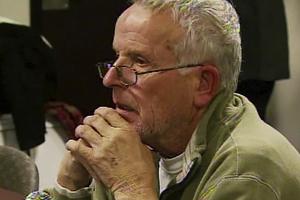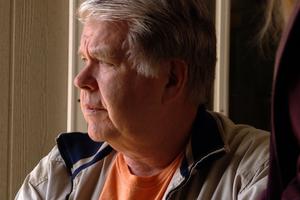Dr. Bernard Nathanson’s Miracle of Divine Mercy
There is no sin that cannot be forgiven if one offers himself up in complete humility to God.

Since the overturning of Roe v. Wade this year, tensions regarding the decision have only gotten worse. Thus far, eight states have completely banned abortion, with more expected to follow. Pregnancy centers have been damaged by pro-abortion activists, with one incident involving the use of a Molotov cocktail.
It is disheartening to hear of such anecdotes, and difficult to fall into the temptation of believing these men and women who support the killing in the womb are so devoted to their belief that their hardened hearts cannot be softened so as to bring about an unconditional support of life. But a radical transformation with God’s grace is what happened to arguably one of the most influential pro-abortion figures in American history.
Dr. Bernard Nathanson had an upbringing that in hindsight could be said to have influenced his lack of concern regarding the unborn. His father repudiated his Judaism and lived as an atheist. He was a poor father figure, verbally abusing Bernard’s mother because he never received the dowry his father-in-law promised.
Although Bernard had a traditional Jewish upbringing, his father assaulted his beliefs, resulting in the atheism passing down from father to son. His mother, who wordlessly accepted her husband’s hatred, one day chased after Bernard with a straight razor after he imitated his father and insulted her.
Nathanson would grow up to make a career in the medical field, all the while never being able to have a stable marriage, with divorces being the outcome when the temporary physical pleasures dulled.
When young Nathanson’s girlfriend became pregnant, he procured an abortion, fearing that raising a child at the time would derail his career path. With another girlfriend he even performed the abortion himself, killing his own child with his own hands.
Nathanson founded the National Association for the Repeal of Abortion Laws, or NARAL, along with Larry Lader and Betty Freidan. Their goal was in the title of their organization: to bring about the complete legalization of abortion in America. Part of the strategy involved attacking the Catholic Church, the rock of morality. He explained their strategy as follows:
We systematically vilified the Catholic Church and its ‘socially backward ideas’ and picked on the Catholic hierarchy as the villain in opposing abortion. This theme was played endlessly. We fed the media such lies as, ‘We all know that opposition to abortion comes from the hierarchy and not from most Catholics,’ and, ‘Polls prove time and again that most Catholics want abortion law reform.’ And the media drum-fired all this into the American people, persuading them that anyone opposing permissive abortion must be under the influence of the Catholic hierarchy and that Catholics in favor of abortion are enlightened and forward-looking. An inference of this tactic was that there were no non-Catholic groups opposing abortion. The fact that other Christian as well as non-Christian religions were (and still are) monolithically opposed to abortion was constantly suppressed, along with pro-life atheists' opinions.
During the proceedings of Roe v. Wade, Lader was quoted 11 times in support of abortion. All of the lobbying Nathanson and fellow NARAL members had done paid off: abortion was protected at the federal level. He wrote, lamenting on his past:
A truthful poll of opinion [in 1968] would have found that most Americans were against permissive abortion. Yet within five years we had convinced the Supreme Court to issue the decision which legalized abortion throughout America in 1973 and produced virtual abortion on demand up to birth.
His worldview at the time was strictly empirical, with God not having a role in moral decisions. If a poor pregnant woman wanted her pregnancy terminated, he saw no issue with aborting the fetus. After all, he could not see the living person in the womb.
But this all change with the invention of the ultrasound. Thoughts of the morality of what he was doing that he had never entertained before were now conceived once he was able to take a look into the womb with the new technology. He could not deny the reality of the cruel act he performed thousands of times: he was killing innocent humans.
In his autobiography, Hand of God: A Journey from Death to Life by the Abortion Doctor Who Changed His Mind, he described how he “felt the burden of sin growing heavier and more insistent.” Suicide ran in his family, and he struggled for a time on what to do with his life.
No longer willing to commit the killing of the unborn, he began to speak at pro-life conferences and attended pro-life demonstrations in front of abortion centers. He inevitably encountered many faithful individuals, whose conversations with Nathanson were instrumental in the former abortion doctor’s decision to finally convert to the Catholic faith.
Once Nathanson was baptized by Cardinal John O’Connor, the latter said, “There. Now you’re as Catholic as I am!” And he was right. All of Nathanson’s sins, all of the thousands of abortions he performed, were forgiven by God, for his forgiveness is limitless. One can think of the criminal on the cross, to whom Jesus said, “Truly I tell you, today you will be with me in Paradise.” There is no sin that cannot be forgiven if one offers himself up in complete humility to God.
For those today who still support abortion, the Lord will be waiting for them with arms outstretched if they choose to accept his unconditional love, available for all who seek it.















